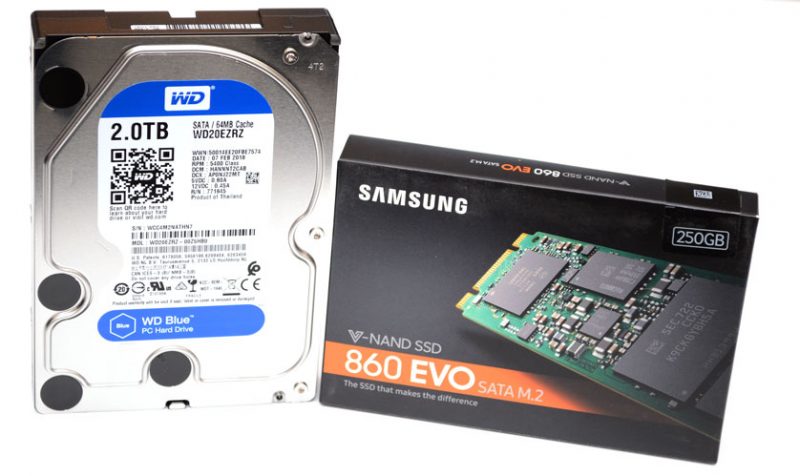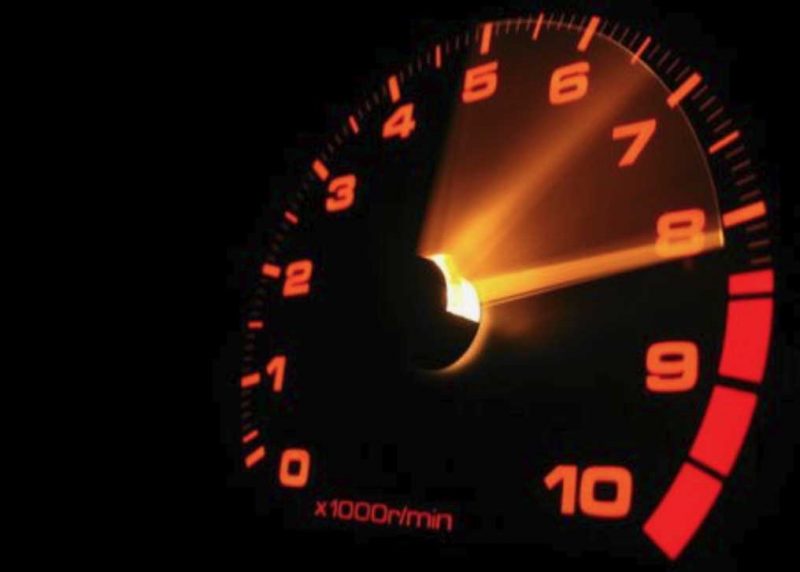AMD StoreMI – The Best Feature of Ryzen Gen 2?
Peter Donnell / 6 years ago
A Closer Look
AM4 X470 Test Bench
- Motherboard – Gigabyte X470 Gaming 7
- RAM – GeIL DDR4 2977MHz Dual Channel 16GB
- CPU – Ryzen 7 2700 8-core 16-thread
- CPU Cooler – Noctua D15S with dual fans
- Graphics Card – Nvidia GeForce GTX 1080 Ti
- Power Supply – BeQuiet Dark Power Pro 850 Watt
- Main Storage Drive – Toshiba OCZ VX500 500GB
- Chassis – Lian Li T80 Test Bench
- Operating System – Windows 10 Pro 64 Bit
StoreMI Storage

Obviously, the two hard drives provided are fantastic in their own right. The Western Digital drive is well known for reliable performance and while 2 TB isn’t a huge amount of storage (not to me at least), it’s more than enough for most users. Of course, you can use bigger hard drives, or smaller ones if required, the size isn’t important, just that you have an SSD to provide the speed end of the setup.
Of course, in regards to speed, the Samsung 860 Evo SATA M.2 is a swift drive, with sequential read speeds of up to 550 MB/s and write speeds of up to 520 MB/s. Meanwhile the bulky 3.5″ WD Blue drive is only 5400 RPM and pretty slow, painfully slow if used as a boot drive and for gaming too.
Setup
Not a technical wizard who knows all there is to know about storage? Fear not, I’m not either, and it couldn’t be much easier. Simply download and run the StoreMI software on your AM4 4xx chipset motherboard system. It’ll allow you to tick the two drives you want to pair, and in seconds, it’ll pair the two together. No lengthy process of building libraries, no long formatting process, it just works. It’ll build the two drives into a single drive as far as Windows is concerned. Once complete, both drives will vanish from My Computer, and a new single drive will take its place. If you use a 2TB drive + any SSD, you’ll only see the capacity of the HDD, not the SSD.

Even Faster? Hell Yes!
Things can be taken to another level with StoreMI DRAM Cache. Right now, this is limited to 2GB, however, AMD has said that future updates will offer larger amounts of RAM to be used. Basically, this 2GB will deliver extremely fast performance for the most important files, while the SSD will do the main stuff, and the HDD to bulk of your storage.

What Goes Where?
AMD’s system seems similar to, but it very unlike Intel’s Optane where your data is stored on the HDD and the Optane drive is just a cache. With StoreMI, your data is read from and written to the SSD first. This means you get the fastest performance available to you at all times. If you use those files a lot, they’ll stay on the SSD section of the storage tier. If they don’t get used much, they’ll migrate over to the HDD storage seamlessly and stay their unless their usage rate changes.
What about the RAM?
That’s the best part, it’s basically a RAM disc cache for the whole StoreMI system. It’ll move your very most used files to the RAM for lightning-fast loading times. That means that while the HDD may load at up to 120-200 Mbps, the SSD at 500+ Mbps, a 3000 MHz memory kit can load at over 5000 Mbps!
Performance

This is a tricky one to really pin down, as things change over time and everyone’s usage is different too. What we can see, however, is how fast the drives read and write when different levels of StoreMI are enabled. On top of that, we observed some improvements in load times of a few applications too.
Faster Loading
Stock loading times on Chrome averaged around 0.15 seconds, which is pretty swift and since it was loading from an SSD already, that’s no big surprise. Once we enabled the StoreMI and its RAM cache, that time dropped to 0.013 seconds, not a huge leap, but faster is faster. What about something bigger like GTA V? Well, that took 57 seconds from launch to gameplay when booting from the standard SSD. With StoreMI enabled, that dropped to 46.8 seconds. Keep in mind, a lot of that time is unskippable intros, so that’s a huge improvement. Windows 10 cold boots are the bain of many, but while we went from 24 seconds on our test system to 20 seconds, that 4 seconds of freedom you can use to read your buddies Facebook status.
Read and Write Performance
The stock performance of the Samsung SSD is pretty quick, offering up to 550 MB read, and 520 Mb write. Our system managed to get close to that with 541 MB read and 519 write, which is pretty darn good. The HDD is much slower, offering speeds of around 144 MB Read and Write.
However, when we paid the drives with StoreMI, it shows as a single 2TB storage device, and still delivers the full speed of the SSD! Moving large files back and forth didn’t pose any noticeable issues, and game loading wasn’t an issue either. To put it simply, we found it just worked, which is awesome.
FASTER!
OK so what about that 2GB cache on the RAM? Well, with that enabled, we recorded a read and write speed of 5240 MBs, which is about 10x faster than without it. This isn’t great for huge games, as only so much can fit on the RAM. However, for applications like Photoshop, Chrome, and smaller files, it’ll speed up the responsiveness by a huge margin.



















